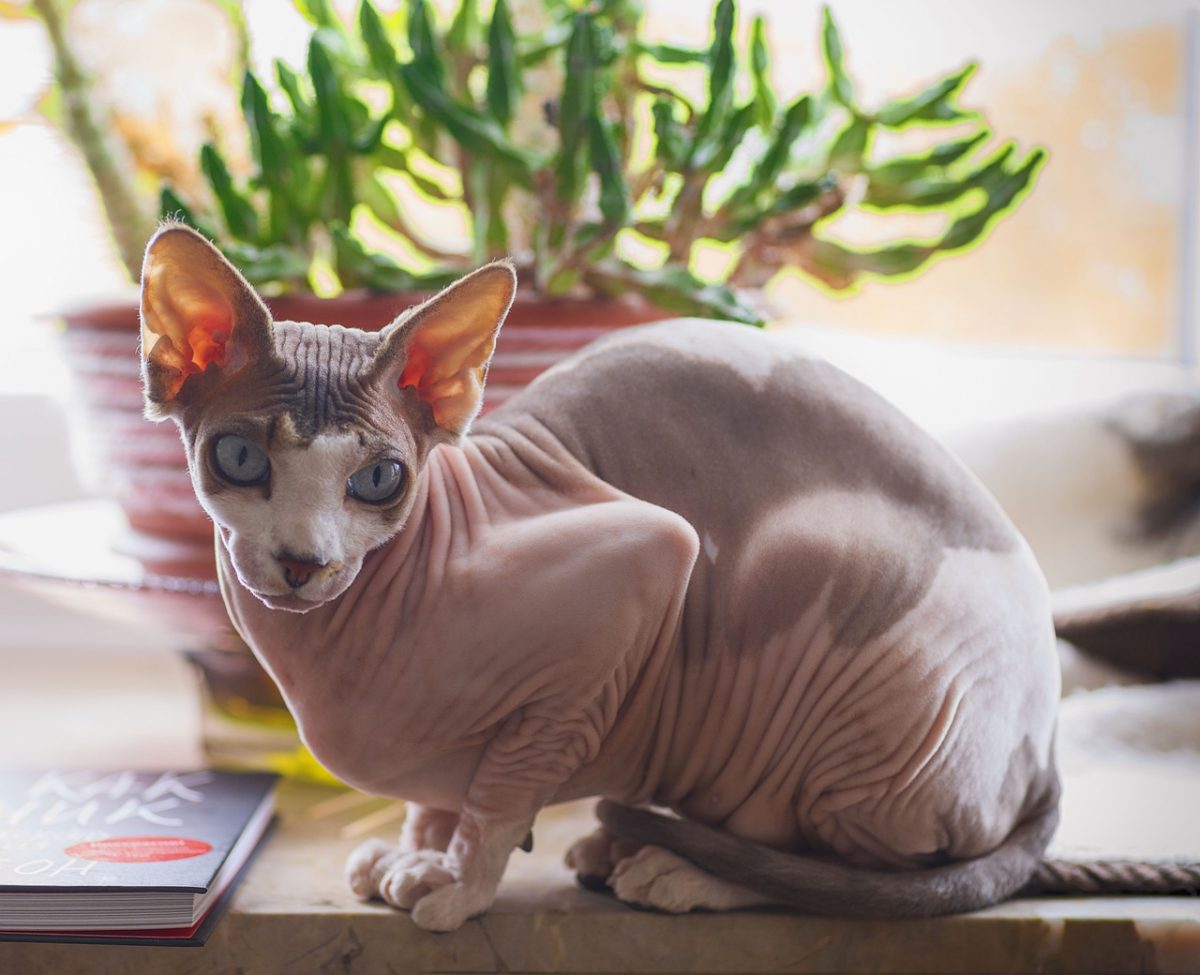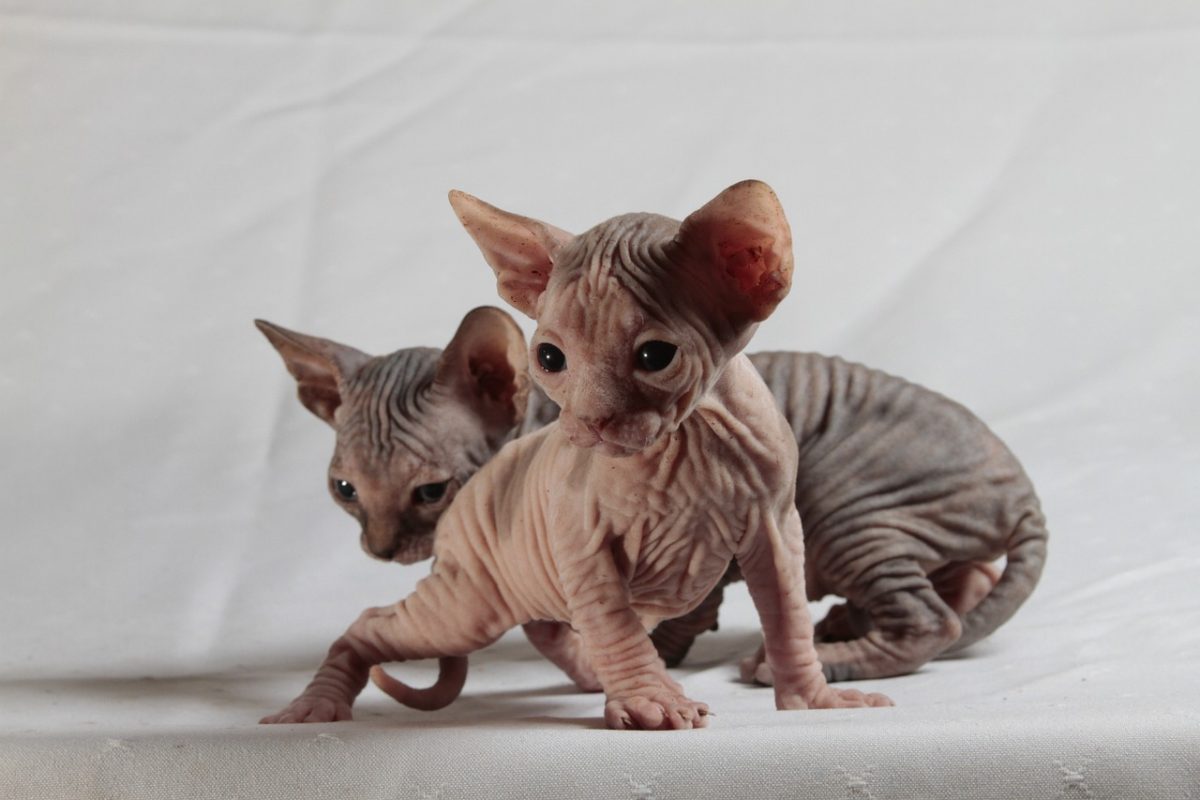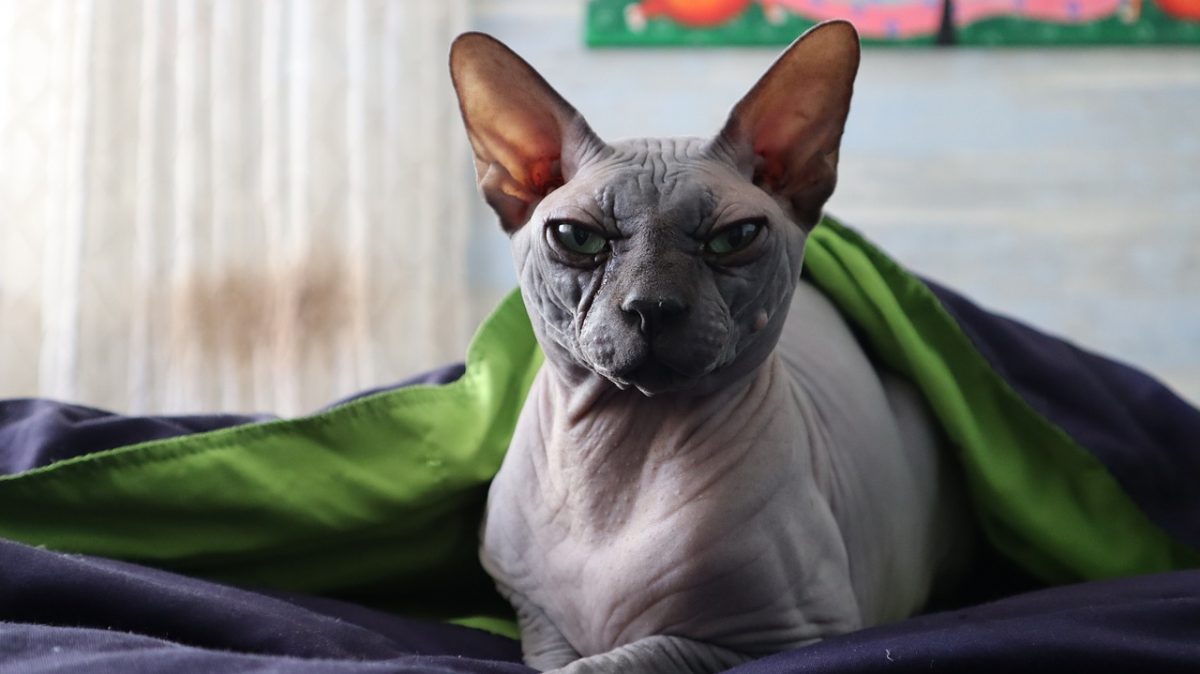They have been called many names, but “ugly” is hardly the right word to describe the elegant Sphynx cat. Despite their regal appearance, these cats are actually incredibly loving and playful in nature. They also make excellent pets for people who love felines, but don’t want to deal with their shedding fur.
That said, there are many misconceptions when it comes to the Sphynx, so if you’re planning on adopting one, make sure you understand them well. Here’s everything you need to know about the so-called “naked cat.”
Where did The Sphynx Cat Originate
Did they really descend from an Egyptian Sphynx cat? One of the most prevalent myths about Sphynxes is that they originate from Egypt. Some believe that they descended from the felines that ancient pharaohs used to keep as pets. The truth is far from this, but is no less interesting.
The Sphynx’s ancestors actually originate from the North Country, which many might find surprising given their lack of a fur coat. They are also not as ancient as one might think. In fact, the first Canadian Sphynx on record was born during the mid-1960s in Ontario as the result of a natural genetic mutation. We’re sure the appearance of a hairless kitten in a litter of furry ones surprised many.
This was followed by two more sets of Sphynx kittens born during the mid-1970s in Minnesota and Toronto. Through breeding efforts, the Sphynx line continues to this day.
Feline Facts: If you think the Sphynx is the only bald cat in the world, then let us introduce you to its Russian doppelganger the Donskoy. While they look almost identical, the Donskoy is an entirely different breed!
Sphynx Cat Physical Traits


Weight: They are relatively small cats and weigh anywhere between 6 to 12 pounds. Some people often mistake them for being underweight given the lack of fur, but that’s just how they are physically built.
Length: These cats measure 13 to 15 inches from head to tail.
Eye Color: This varies from one type to another, but Sphynxes usually have light-blue eyes. In some cases, they may even have heterochromia or a different color for each eye!
Life Expectancy: A Sphynx cat can live from nine to 15 years. If they are mostly indoor cats and owners pay attention to their health, these cats can live longer. This falls well within the average cat lifespan.
Sphynx Cat Personality
Their sharp features might make them appear unfriendly, but that couldn’t be further from the truth! Sphynx cats have been described as “acrobatic clowns” and for good reason! The Sphynx breed is known to be agile and can be very playful, whether it be around other cats or by themselves.
Their exercise needs are low so don’t worry too much about providing them with daily physical activity. Aside from being show-offs, they mostly enjoy cuddling with their humans and are known to be very affectionate with other species as well.
That said, if you are away from home often, do consider getting a pair to keep them from becoming bored and experiencing separation anxiety. If you already have other pets, then you can rest easy knowing that the so-called Dobby cat can easily get along with other animals. They’re even known to snuggle with dogs!
Intelligence and Training
Here’s the thing about the Sphynx cat personality: their curiosity, paired with their intelligence, can make them a handful. In fact, experts suggest keeping them indoors for their own safety. This is because they can get into trouble out of a need to explore more. To satisfy this need, provide them with ample toys and hiding spots in your home.
Then again, these cats would love it more if you allowed them to perch on your shoulders or sit on your lap!
Not-So-Naked Cat


When you first see them, especially a Sphynx kitten, they look more like naked mole rats than cats. However, they are not as hairless as most people think. Their bodies have a layer of downy fuzz. Unlike your average cat, a Sphynx’s coat feels more like suede.
What about variety? The most common type of Sphynx cat we see are flesh-toned, but they come in a variety of colors and patterns. In fact, you will be able to find a Sphynx version of many long-haired cats. This includes Calicos, Tabbies, Tuxedos, and so on. The black Sphynx cat, for one, is particularly loved because of its enigmatic appearance.
Feline Facts: They might not have their own “fur coat,” but these cats are four degrees warmer than most other cat breeds!
Are Sphynx Cats Hypoallergenic?
One of the most prevalent myths about this adorable bald cat is that they’re good for people who have allergies. However, this isn’t the case. Did you know that the most common reason some Sphynxes get rehomed or end up in shelters is because of this mistake? Sphynx cats are not hypoallergenic and produce Fel d1, which is the allergenic protein found in a cat’s skin secretion and saliva.
Contrary to popular belief, it isn’t just cat fur that makes people’s eyes all itchy and red. Keep this in mind if you’re planning on getting this cat breed!
Important Facts About a Sphynxes Skin


One of the top considerations when it comes to keeping a Sphynx cat clean is their skin. Despite the fact that they might seem super-clean, their skin produces quite a bit of oil due to their lack of fur that can trap all sorts of particles. This forms a greasy film over their bodies, which means their owners would have to give them weekly baths.
When choosing hygiene products for your Sphynx cat, opt for ones with the least amount of chemicals to avoid possible side-effects. Natural ingredients such as oatmeal, aloe, and coconut oil are the best for avoiding inflammation and keeping their skin properly moisturized.
PRO-TIP: Cats and water don’t usually go well together, but if you start them young and get the kittens used to the bathing process, then you shouldn’t have any issues. Just make sure you handle them as gently as possible and avoid splashing water on their faces.
Owners would also need to be mindful of their ears. Because there’s no hair to keep dirt or dead skin cells out of the cavities, regular cleaning is a must. Use a soft washcloth or a cotton ball when doing so.
How to Keep Your Sphynx Cat Safe During Summer
So now that we’ve established how sensitive a Sphynx cat’s skin is, what can you do to protect it during hotter months? Since these babies enjoy basking in the sun, here are some tips to make it much safer for them and less worrisome for you!
- Build or purchase a play tent. This creates a shaded area for your Sphynx if you want to let them play outdoors for a little.
- Getting too warm indoors? If going outside isn’t an option, create a DIY cooling mat for them by placing marbles in the freezer. Once these are cool enough, tuck them under their bed or a keep mat. These should last for a good period of time before you need to replace them.
- Add ice cubes in their water dish. Doing so will not only keep their water cool, it will encourage them to drink more. This is especially important during hotter months when they lose a lot of hydration through their skin. Be mindful of dehydration, especially with a Sphynx kitten!
- Get a natural sunscreen for them. Keep in mind that the lighter your Sphynx’s skin is, the more easily they can get sunburned. Applying a natural sunscreen, one that wouldn’t harm them should they lick it off, will be beneficial. This should prevent pigmentation and sunburn.
- Watch out for signs of heatstroke! One of the first things you’ll notice is the change in their breathing. Your Sphynx cat will show labored breathing with heaving sides. Their ears are likely to turn red as well. If this happens, relieve the heat by spraying them with cool (but not freezing) water. Take them somewhere shady and turn on a fan. Observe them for any other signs. If things don’t appear to be getting better, call your vet.
Keeping Your Sphynx Cat Warm During Winter


It isn’t just the sun that you need to be mindful of. Colder months can affect your cat in the same way it affects you. Needless to say, if you feel cold then they are likely feeling the same thing. Here’s what you can do to keep them warm and cozy:
- Cat sweaters. You can knit one up for them, DIY one from old socks, or even purchase a brand new one. The most important consideration is choosing soft fabric that will not irritate their skin. Also, make sure to change their sweater frequently and to wash it well.
- Warm cat beds. Heated cat beds are a must, especially if you live in a particularly cold place. A covered cat bed works just as well too! Of course, we’re sure that your cat would prefer cuddling with you instead.
- Don’t let them go outdoors. It goes without saying that a Sphynx cat does not have ample protection against snow. Keep them safe by staying indoors.
- Make sure that the water you give your cat isn’t too cold either. If possible, maintain room temperature for their food and drink.
Sphynx Cat Health
Aside from being prone to sunburn, Sphynx cats are a generally hardy breed. However, certain factors can affect their well-being. This includes how they were bred and if it was responsibly done. If they were adopted, you should also be aware of any existing issues they have before you bring them home.
In general, do be mindful of the following:
- Hereditary myopathy or muscle weakness. This is why health history is important if you’re purchasing them from a breeder.
- Periodontal disease and other oral-related disorders. Keep in mind that they will need regular dental cleaning to avoid serious oral issues.
- Hypertrophic cardiomyopathy. This is a disease that can cause the heart muscle to thicken.
Regular check-ups and a healthy diet should help you prevent these issues. Grooming is also key, especially when it comes to their skin health. The more familiar you are with their needs, the better you will be at taking care of your Sphynx.
Recommended Diet for a Sphynx Cat
Aside from being a “naked cat,” one of the most defining features of a Sphynx is their adorable little potbellies! Take this as a sign that they eat a lot and would need more food than your average cat. That said, make sure you don’t overfeed them. Because of their need to please their humans, a Sphynx will eat anything that you offer them.
To make it easier on their sensitive digestive systems, keep their portions small but feed them in regular intervals throughout the day. This is the most ideal method, even for other types of cats. By doing so, you’ll be able to keep them from becoming disinterested in their food.
Best Type of Food for Sphynx Cat
Choosing the right type of food is essential when it comes to keeping your feline friend healthy. Experts suggest feeding them a balance of wet and dry food since both come with important benefits.
Dry Cat Food: This helps clean your cat’s teeth and also protects their gums. The catch is that it doesn’t contain much moisture, so you’ll need to keep your cat properly hydrated after eating. Some people also add water to their cat’s dry food to prevent dehydration.
Wet Cat Food: There are plenty of options when it comes to wet food. You’ll find different flavors and meat sizes at your local pet store. Depending on your cat’s taste, you might want to try both the pate and chunky varieties. It isn’t just fish that these types of products contain, either. Some brands offer beef, chicken, and even mashed veggies to supplement your cat’s nutritional needs. Wet food offers the most hydration and collagen content.
Raw Cat Food: Long-time Sphynx cat owners might also recommend a raw diet for your furry pal. Research suggests that these come with a number of important health benefits. Try feeding them raw fish like sardines or tuna, along with the kibble and wet food.
Final Thoughts
Ready to take home your Sphynx cat? If you are a new pet owner, it is always best to do ample research before deciding on bringing them home. This ensures that you know exactly what you’re getting into and will make you more confident about your ability to care for them.


